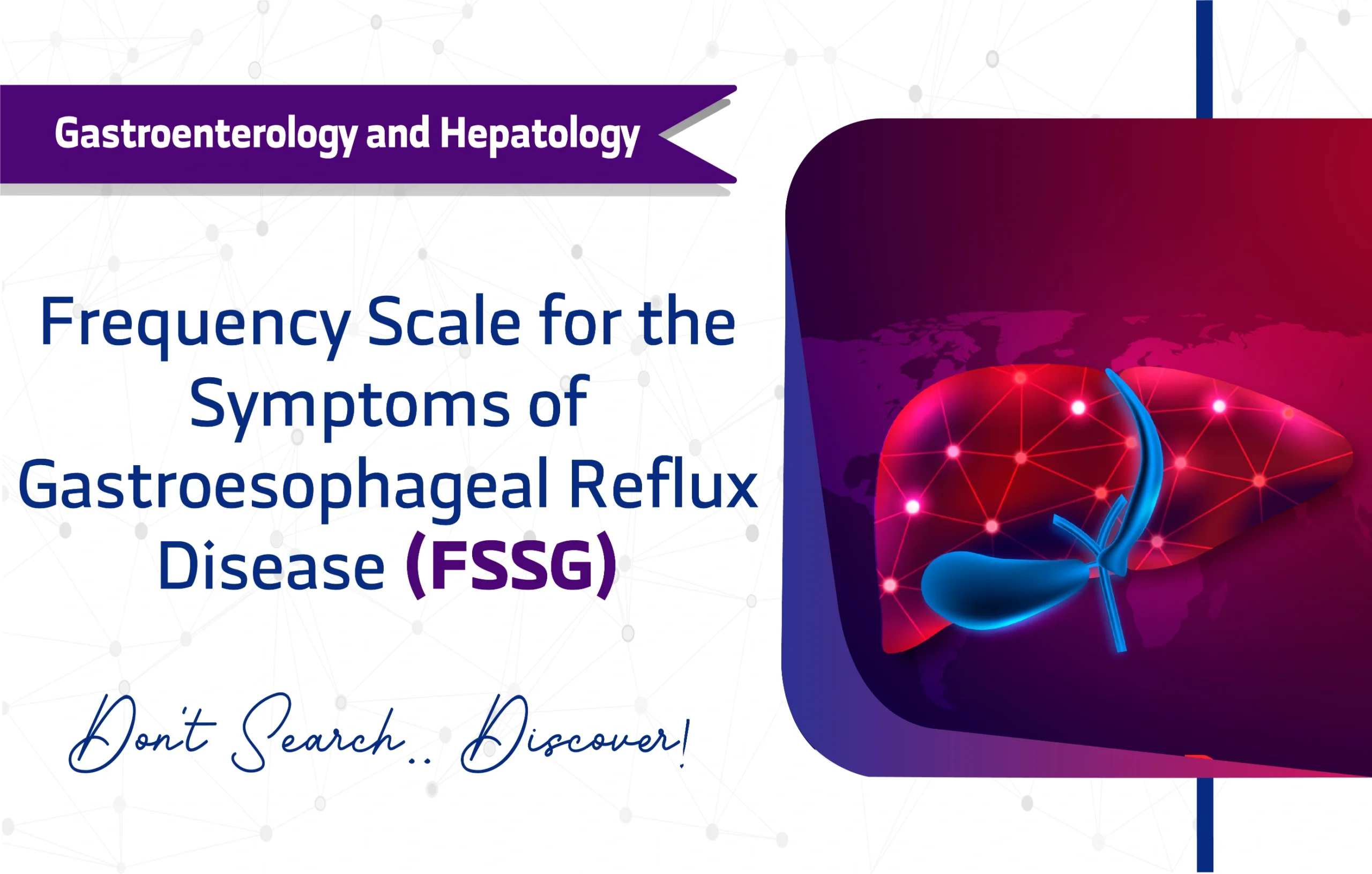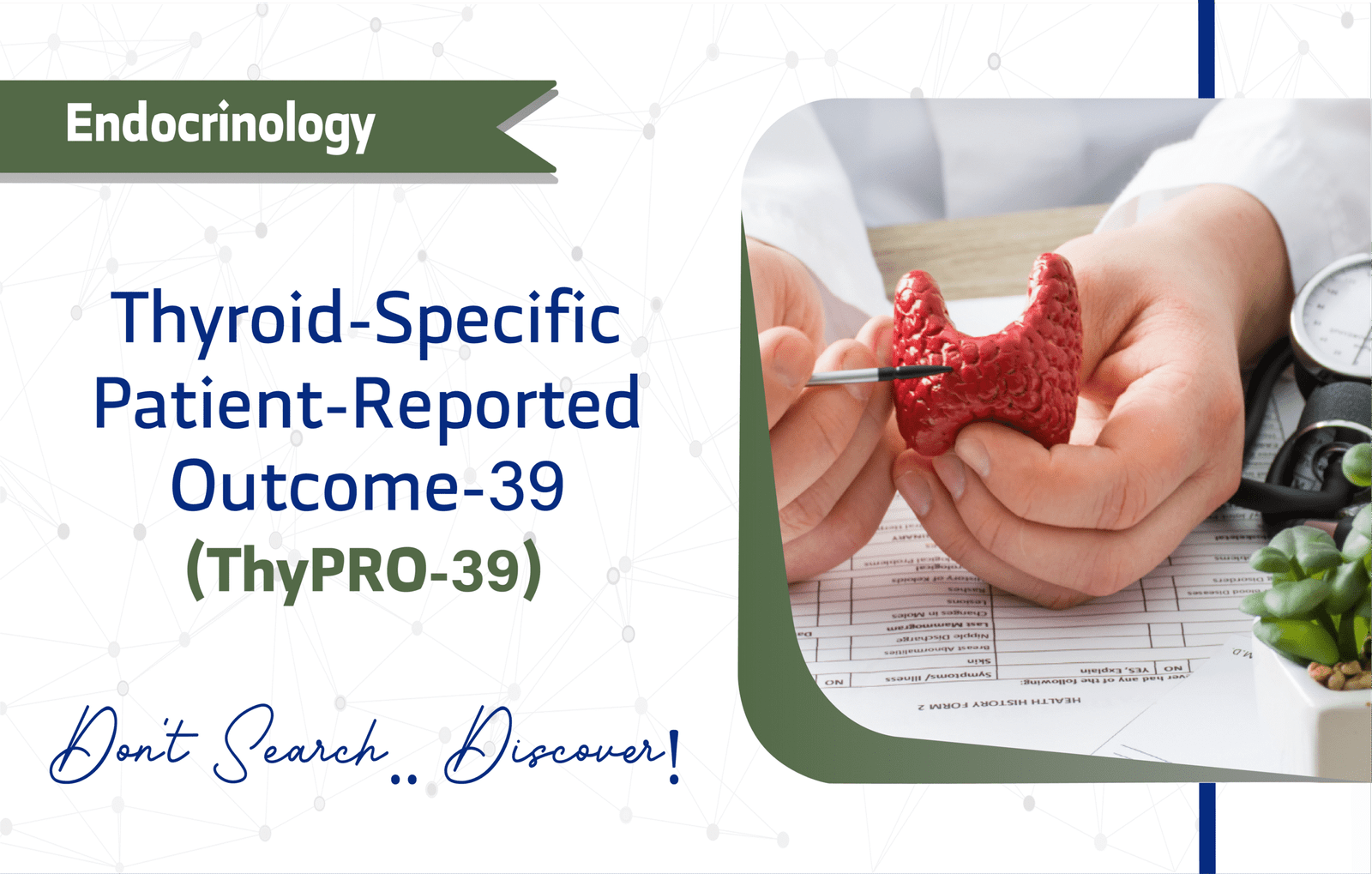Introduction
The Frequency Scale for the Symptoms of Gastroesophageal Reflux Disease (FSSG) is a validated, patient-reported tool developed by Kusano et al. (2004) to assess GERD-related symptoms such as acid reflux and dyspepsia. Since its publication, the tool has received over 500 citations and has seen widespread use in both research and clinical contexts.
It helps clinicians and researchers identify symptom frequency, evaluate treatment response, and guide therapeutic decisions. In addition, because of its quick administration, validated translations, and strong psychometric properties, the FSSG proves ideal for international use and large-scale studies.
Key Features of The Frequency Scale for the Symptoms of Gastroesophageal Reflux Disease (FSSG)
Purpose and Use
The FSSG aims to quantify frequency and severity of GERD-related symptoms, especially acid reflux and dyspepsia. As a result, it plays a central role in:
- Diagnosing GERD
- Monitoring treatment efficacy
- Screening populations in both research and clinical trials
Questionnaire Details
The FSSG consists of 12 items, divided into two core sub-domains:
- Acid Reflux Subscale: 7 items (maximum score = 28)
- Dyspepsia Subscale: 5 items (maximum score = 20)
In clinical practice, it primarily targets gastroenterology, focusing on reflux disease and functional dyspepsia. Additionally, questions explore symptoms like heartburn, regurgitation, bloating, and postprandial fullness.
Target Population
The FSSG is validated for use in adults aged 18 and older. It is most commonly applied in populations between 20 and 70 years, where GERD symptoms frequently occur. Therefore, it is suitable for:
- Young Adults (18–24 years)
- Middle-Aged Adults (25–44 years)
- Older Adults (45–64 years)
- Seniors (65+ years)
Languages Available
To support global use, the FSSG is available in multiple languages, including:
- English
- Japanese (original)
- Mandarin Chinese
- Spanish
- French
- And more
This multilingual access significantly enhances inclusivity in cross-cultural and multinational studies.
Cost, Licensing, and Administration of the FSSG
Flexible in design, FSSG takes less than five minutes to complete. Users can administer it via:
- Paper-based forms
- Digital (online platforms)
- In-person interviews
No advanced training is required, which makes it easy to integrate into routine workflows. Notably, the questionnaire remains free for non-commercial use under an open-access license. However, commercial or sponsored research may require permission from Springer Nature.
Scoring Method
Each item is rated on a 5-point Likert scale (0: “Never” to 4: “Always”), resulting in a total score ranging from 0 to 48. Higher scores indicate greater symptom burden. Subscale scores include Acid Reflux (7 items, max 28) and Dyspepsia (5 items, max 20).
Clinical Utility and Applications
The FSSG proves particularly useful for the following purposes:
- Screening: Identifying GERD in symptomatic adults
- Diagnosis: Supporting clinical evaluation of acid reflux and dyspepsia
- Monitoring: Tracking symptom evolution during and after treatment
- Treatment Planning: Tailoring interventions based on symptom burden
- Research: Widely adopted in clinical trials and epidemiological studies
Reliability and Validity
The FSSG has shown high reliability, with Cronbach’s alpha values between 0.82 and 0.84, indicating strong internal consistency.
This robustness has been demonstrated through several key validation studies:
Its consistent performance across different populations supports its use in both clinical and academic settings.
Limitations and Considerations
While the FSSG is widely used, it presents a few limitations:
- Self-report: Patients may report symptoms based on bias, which can affect accuracy.
- Cultural Bias: Certain items may fail to translate meaningfully across different cultures.
- Language Barriers: Although translators have made versions available, some nuances often get lost.
- Limited Symptom Focus: The tool emphasizes frequency; however, it does not address symptom intensity.
- Limited Validation Studies: Researchers still need to validate the FSSG more broadly in non-Asian populations.
Despite its strengths, these issues can limit the tool’s universal applicability.
Other Versions and Adaptations
Although no shorter official version exists, several tools complement the FSSG:
- GERD-Q (6-item)
- Reflux Disease Questionnaire (RDQ)
- Gastrointestinal Symptom Rating Scale (GSRS)
- GERD Impact Scale (GIS)
- GERD-HRQL (GERD-Health-Related Quality of Life)
- Quality of Life in Reflux and Dyspepsia (QOLRAD)
- Reflux Symptom Index (RSI)
- Infant GER Questionnaire (I-GERQ)
These tools provide alternatives or supplements depending on research scope or clinical need.
Additional Resources
- Original Validation Study (Springer Link)
- Access the FSSG Questionnaire (PDF)
- For inquiries, contact Motoyasu Kusano: mkusano@showa.gunma-u.ac.jp
- More GI tools are available from Oxford University Press.
Frequently Asked Questions (FAQ)
- Who can use the FSSG?
Clinicians, researchers, and healthcare professionals often apply it when working with adult populations suspected of having GERD. - How long does it take to complete the FSSG?
Typically, patients complete it in under 5 minutes — a feature that makes it ideal for routine use. - How is the FSSG administered?
Completion can occur via paper forms, online platforms, or direct clinical interviews, depending on the setting. - Is there any cost to using the FSSG?
Available under an open-access license, the tool remains free for non-commercial use. For commercial applications, permission from Springer Nature may be required.
A Word From ResRef
The Frequency Scale for the Symptoms of Gastroesophageal Reflux Disease (FSSG) continues to serve as a cornerstone tool in GERD management because it bridges symptom reporting with clinical decision-making. Furthermore, its brevity and focus on actionable domains make it indispensable for both clinicians and researchers.
References
- Kusano M, Shimoyama Y, Sugimoto S, Kawamura O, Maeda M, Minashi K, Kuribayashi S, Higuchi T, Zai H, Ino K, Horikoshi T, Sugiyama T, Toki M, Ohwada T, Mori M. Development and evaluation of FSSG: frequency scale for the symptoms of GERD. J Gastroenterol. 2004 Sep;39(9):888-91. doi: 10.1007/s00535-004-1417-7. PMID: 15565409.(link)
- Gong EJ, Jung KW, Min YW, Hong KS, Jung HK, Son HJ, Kim DY, Lee J, Lee OY. Validation of the Korean Version of the Gastroesophageal Reflux Disease Questionnaire for the Diagnosis of Gastroesophageal Reflux Disease. J Neurogastroenterol Motil. 2019 Jan 31;25(1):91-99. doi: 10.5056/jnm18133. PMID: 30646480; PMCID: PMC6326199.(link)
- Zavala-Gonzales MA, Azamar-Jacome AA, Meixueiro-Daza A, Ramos A, J JR, Roesch-Dietlen F, Remes-Troche JM. Validation and diagnostic usefulness of gastroesophageal reflux disease questionnaire in a primary care level in Mexico. J Neurogastroenterol Motil. 2014 Oct 30;20(4):475-82. doi: 10.5056/jnm14014. PMID: 25273118; PMCID: PMC4204416.(link)







